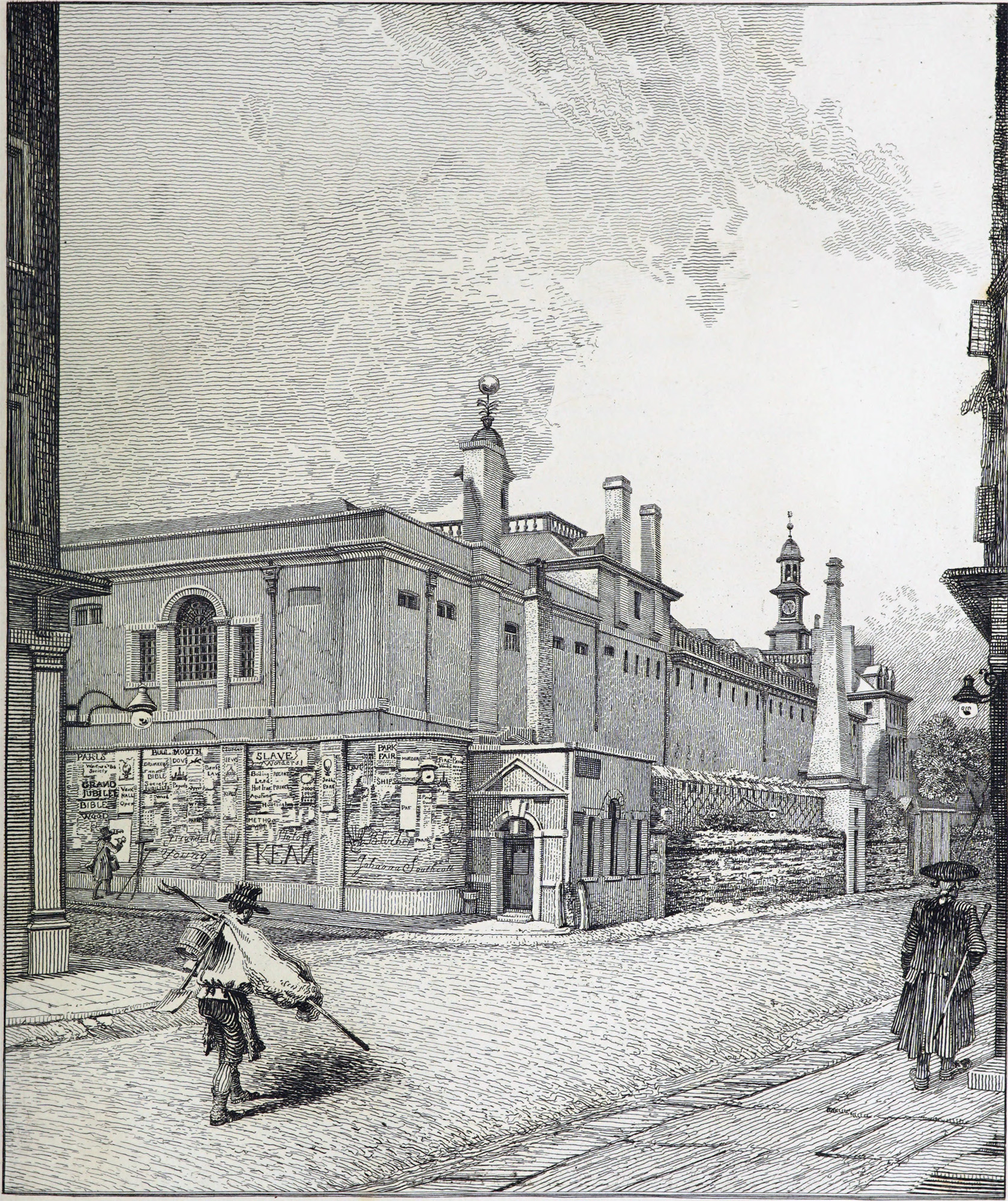
South West View of Bethlem Hospital and London Wall
by J.T. Smith
1814
Bethlehem Hospital and London Wall, drawn in 1814 and published in Ancient Topography of London, by John Thomas Smith (London: J. M'Creery, published and sold by the proprietor, John Thomas Smith, etc., 1815) (facing page 32).
The annexed plate exhibits half the back front of Bethlem Hospital, and also the back, and part of the side, of the West wing, erected by benevolent contributions, in 1733, for the reception of Incurables.
This view commences from the scite of Moorgate, which stood much about the spot, where the bill-sticker stands (see the print). The other half of Bethlem was precisely the same, with the addition of a house for the Apothecary; and ended at the Postern, which stood opposite to Winchester Street: this half was sold by auction, in various lots, and brought about 5000l. The back of this building stands nine feet distant from the City wall, which, in some measure, acts as a screen to it. The principal entrance is from the North, of brick and free-stone, adorned with four pilasters, a circular pediment and entablature of the Corinthian order. The King's arms are in the pediment, and those of Sir Wm. Turner above the front centre window. Notwithstanding the melancholy purpose for which it was erected, it certainly conveys ideas of grandeur. Indeed it was for many years the only building which looked like a Palace in London. Carleton House, which is now by no means, even with its costly screen, so princely as might have been expected, was in my memory a mere lodging house in appearance. As for St. James's palace, it looks more like a place of confinement, than a palace. London should have boasted such a building as Hampton Court, for the town residence of our Sovereign. Before the front of Bethlem, there is a spacious paved court, bounded by a pair of massy iron gates, surmounted with the arms of the Hospital, viz. Argent, two Barrs Sable, a Labell of five points, throughout Gules, on a Chief Azure, an Estoile of sixteen points, Or, charged with a plate thereon, a Cross of the third, between a Human Scull, in a cup on the dexter side, and a Basket of Bread, i. e. Wastell Cakes, all of the fifth, on the sinister. Early mention is made of Wastell bread, by Chaucer, who says, speaking of the Prioress.
Of smale houndes hadde, she, that she fedde,
(32)
With rosted flesh, and milk and wastel brede.
This image is in the public domain.